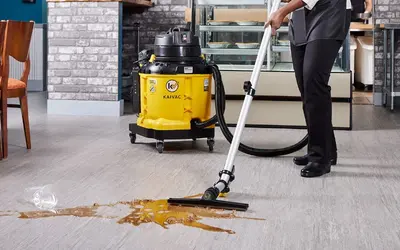Natural Disaster Cleanup

Natural disaster cleanup helps with healing after a major event. Hurricanes, floods, earthquakes, and wildfires leave devastation in their wake. Cleaning up after these natural disasters is the first step in repairing communities and becoming whole again.
But the act of cleaning up after a natural disaster can be as dangerous as the actual event. “The clean-up and recovery period after a major storm may also present significant health risks,” according to the Federal Emergency Management Agency (FEMA). Risks of this “second wave” of injuries include exposure to dangerous contaminants, electrical shocks, falls, and more.
Safety comes first when cleaning after a natural disaster. Learn how to protect yourself and others after the event.
Gear Up Properly
Return to assess the damage only after local authorities say the area is safe. Even after floodwaters have receded and roadways are clear, approach with caution. Floods bring all kinds of contaminants and dangers including sewage, chemicals, debris, and wildlife.
CDC guidelines urge cleaners to gear up with personal protective equipment. Gear includes goggles, hard hats, N95 masks or respirators, waterproof boots, and at least two fire extinguishers. If there is sewage contamination, the CDC urges cleaners to wear rubber boots, rubber gloves, and goggles.
Pressure Wash Safely
Pressure washing helps speed cleanup after a natural disaster. Their strong spray of clean water blasts mud, dirt, and debris from large, sturdy surfaces. But even this useful tool poses its own set of dangers.
According to the CDC pressure washer safety page these hazards include:
- Wounds from the powerful spray that appear minor but can lead to infection.
- Injury from being hit by objects thrown by the spray.
- Electric shock if a plug-in unit is improperly used.
- Carbon monoxide poisoning from using a gas-powered unit indoors.
To avoid these dangers always read and carefully follow safety instructions found in the operator’s manual.
Prevent Mold Growth
Preventing mold growth is one of the most important aspects of natural disaster cleanup. Exposure to mold can cause a stuffy nose, sore throat, coughing, wheezing, burning eyes or skin rash in healthy people. People with asthma or mold allergies can have severe reactions like fever or shortness of breath.
Drying out the space as quickly and safely as possible is the best way to prevent excessive mold growth after a natural disaster. Use a wet/dry vacuum to quicky suck up remaining stormwater. Again, read and follow user manual directions carefully to avoid injuries.
Not everything can be saved from water damage. Items to discard immediately include:
- Mattresses
- Carpet and carpet pads
- Upholstered furniture
- Drywall and insulation
Find the Right Tools
Securing a pressure washer and wet/dry vac to clean up after a natural disaster can be a headache as everyone is searching for these machines at the same time. Organizations that have a Kaivac No-Touch Cleaning® system definitely enjoy an advantage. These cleaning tools combine a pressure washer with a wet/dry vacuum for advanced restroom maintenance.
But they are also very useful for disaster clean up. Owners regularly report using the No-Touch Cleaning systems to pressure wash areas other than restrooms and suck up water after a flood. Having this kind of versatility and power on hand made a difficult situation easier to handle.
Safety comes first when cleaning up after a natural disaster. Look to Kaivac for help in getting everything back to normal quickly and safely.


